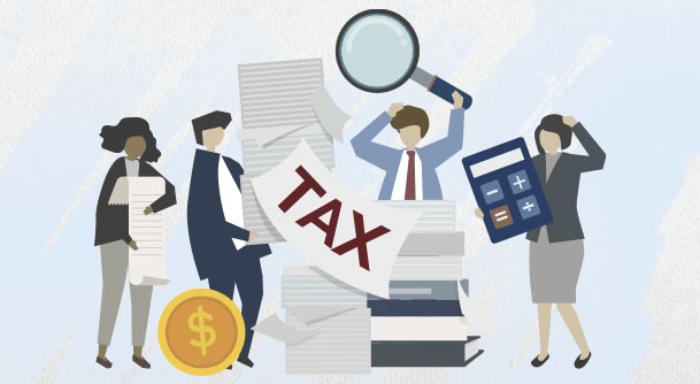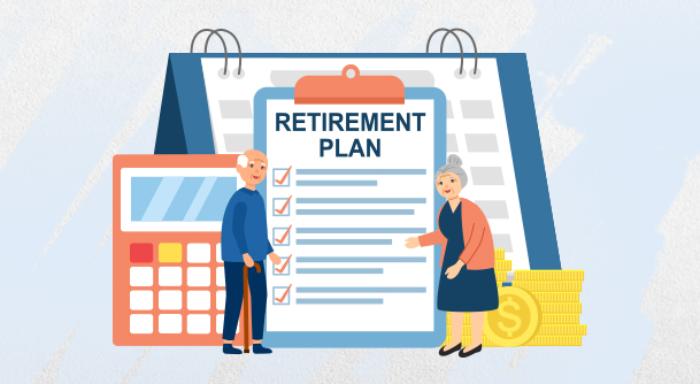Everything You Need to Know About Self-Assessment Tax
Blog Title
4927 |
8/25/25 4:30 AM |
As a responsible citizen of India, you need to ensure that you pay your income tax on time. Your tax liability can be calculated in a variety of ways. If you are a salaried individual, your tax calculations can be done via two ways: Tax Deducted at Source (TDS) and Self-Assessment Tax (SAT).
As an employee, most of your tax payments are completed automatically thanks to TDS. However, sometimes you may have additional income that is unrelated to your workplace. In such cases, TDS will not be applied, and you will have to calculate and pay the outstanding taxes by yourself. This tax liability that you directly calculate by yourself is known as ‘self-assessment tax’.
If you’re curious to learn more, here is a simple guide on the basics of self-assessment tax. Read to learn how you can calculate, pay, and manage your taxes by yourself!
What is Self-Assessment Tax?
Your Income Tax Return (ITR) filings are not considered complete until you pay off your entire tax liability for the financial year. Invalid tax return submissions can lead to high interest charges on the unpaid tax amount and additional penalties.
When you file taxes, the TDS and advance taxes you paid throughout the year will be deducted from your final tax bill. And if the amount you paid is insufficient, you would have to pay the remaining balance by yourself to make up for the difference. This additional tax is known as the self-assessment tax. It should be paid at the end of financial year, but before filing the income tax return.
Why is Self-Assessment Tax So Important?
Firstly, it is crucial for adhering to the tax regulations in India. And as we know, underpaying or not paying taxes on time can result in fines, interest accumulation, and legal repercussions.
As per section 234A, interest is levied for delay in filing the tax return of income. According to regulations, about 1% interest per month is charged on unpaid taxes.
Furthermore, self-assessment tax helps correct any discrepancies or underpayments that may have occurred during the financial year.
When Should You Pay Self-Assessment Tax?
Self-assessment tax should be paid when your total tax liability exceeds the tax already paid through Tax Deducted at Source (TDS) and Advance Tax. This typically occurs after you've calculated your total income for the financial year and assessed your due taxes.
Calculation of Self-Assessment Tax
Here is how you can evaluate the amount of your self-assessment tax:
Estimate Your Annual Income
Calculate your total income from all sources for the financial year, including salary, interest, rental income, and other earnings.
Subtract Deductions
Remove deductions and exemptions under applicable sections (like 80C and 80D) to reduce your taxable income.
Calculate Tax Liability
Use the applicable tax slab rates on your taxable income to determine the total tax due.
Subtract TDS and Advance Tax
Deduct any TDS and advance tax already paid from your total tax liability.
Pay Self-Assessment Tax
If there is tax liability left after deductions, the balance should be paid as self-assessment tax.
Example of Self-Assessment Tax
Let’s say your total tax liability for the year is ₹50,000.
This amount includes all your income sources such as your salary, your investments, and any other source of income that is taxable. Now, most of your tax liability will be automatically deducted from your income via TDS.
For example, your company has already deducted ₹30,000 from your salary as TDS, so you don’t have to pay that amount yourself. And the investment apps you use have also deducted ₹5,000 from your profits. Therefore, the total TDS that has already been deducted from your income is ₹35,000.
That means that you still must pay off ₹15,000 worth of taxes directly. This amount that is taxable but hasn’t been deducted via TDS is called the ‘self-assessment’ tax. You must determine this taxable amount yourself (or hire the services of an accountant).
How Do You Pay Self-Assessment Tax?
You can pay SAT online via the official income tax e-filing portal or offline at various authorised bank branches using Challan 280.
To make online payments, you need to log into the e-filing portal. Here's a step-by-step guide for the same:
- Go to the official income tax e-filing portal- (https://incometaxindiaefiling.gov.in/).
Log in using your credential. If you are a new user, you'll need to register first. - Then find and select e-Pay Tax in the e-File menu. Choose New Payment. This will take you to a section where you can select the type of tax payment. Select (300) Self-Assessment Tax.
- Enter all the required details, like your PAN, assessment year, etc. Do note that Assessment year is the year following the financial year for which you are paying the tax (for example, for income earned during FY 2023-24, select AY 2024-25).
- Double-check all the information you've entered. Mistakes here could lead to discrepancies in your tax records.
- Select your preferred payment method (Net Banking or Debit Card) and your bank from the list of authorised banks.
- Once you select the payment method, you will be redirected to your bank's payment gateway. Complete the payment process as directed. Ensure that you have sufficient funds in your account for the payment.
- After the payment is successful, a challan containing the CIN (Challan Identification Number), payment details and bank name will be generated. Save and print this challan for your records.
Remember to check your Form 26AS after a few days to ensure the payment is reflected in your tax credit statement. When filing your Income Tax Return, report this payment under the 'Taxes Paid' section to claim credit for the self-assessment tax paid.
Consequences of Non-Payment/Part-Payment of Self-Assessment Tax
The penalty for non-payment of self-assessment tax is mentioned in Section 140 (3) of the Income Tax Act, 1961. As per the law, any person who fails to pay the entirety of their self-assessment tax will be deemed as an ‘assessee in default’.
The penalty for an assessee in default is clarified in Section 221 (1) of the Income Tax Act. According to this section, the penalty amount will be decided by the Assessing Officer (AO) and the defaulter will have to pay the fee to settle their tax liabilities. The penalty amount can be as high as, but not higher than, the amount of tax that is pending.
Endnote
When creating your financial plan, make sure that you keep taxation in mind and choose tax efficient investments. The Income Tax Act allows deductions for various investments made by the taxpayer in a particular financial year. This means that you can reduce your overall tax liability with strategic investments. Tax saving instruments should be a vital part of your tax planning, as they can contribute to achieving your financial goals.
Insurance policies are one of the best tax saving instruments to secure your future and enjoy tax benefits. Section 80C of the Income Tax Act allows you to deduct your annual premiums (up to ₹1.5 lacs) from your taxable income.
If you are looking for a life insurance plan, Edelweiss Life Insurance offers different options that can cater to a variety of needs. So, select the ones that work best for you and opt for the best life insurance plan to secure your financial future now.
FAQs
How is self-assessment tax different from advance tax?
Self-assessment tax is the tax amount that that hasn’t been deducted via TDS and hence needs to be directly paid during tax filing season. On the other hand, advance tax is just a method that you can use to pay your taxes before the end of the financial year. Instead of paying taxes as a lumpsum during tax filing, you can choose to make payments in advance if your tax liability is greater than ₹10,000.
What is the due date for paying self-assessment tax?
The due date to pay self-assessment tax is usually July 31st. However, this date can be extended depending on the announcements made by the Income Tax Department of India.
Can I avoid paying penal interest if I partially paid self-assessment tax?
No, if you have only partially paid your self-assessment tax then you will still face a penalty for the amount that remains unpaid.
Can I pay self-assessment tax in instalments?
Yes, you can pay self-assessment tax in instalments, as long as the entire amount is paid off before the due date.
Can I pay self-assessment tax offline?
Yes, self-assessment tax can be paid offline. Offline payments can be made at an authorized bank counter or via RTGS/NEFT. Please search online or ask your accountant to find authorized banks in your area that accept self-assessment tax payments.
What are the common mistakes to avoid when making self-assessment tax payment?
Ensure that you pay your dues on time, avoid overclaiming deductions, completely and disclose your total income truthfully. Pay your taxes on time to prevent any penalties or fees!





